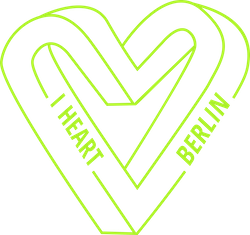Hardenbergstraße, 1906
When I first started to wander around Berlin, some districts seemed to just merge together and I needed to put some effort into finding their distinguishing characteristics. Charlottenburg, on the other hand, has definitely always been a very distinctive part with a little nostalgic streets, fancy antique boutiques, and elegantly dressed people. And no wonder that’s the impression I got – up until 1920 Charlottenburg was an independent city to the west of Berlin.
The photos we are presenting date back exactly to the turn of last century, when Charlottenburg was still its own city but already with a noticeable influx of people. We’ve found some very interesting sights that you can no longer come across, like the synagoge in the Fasanenstraße. Another image that’s contrasting very heavily with the current situation is the Kaiser-Wilhelm-Gedächtniskirche with all the towers intact. Originally built in the 1890s and damaged by bombs in 1943, it is obviously still a major sight-seeing point in Kurfurstendamm and one of my all-time personal Berlin favorites. The damaged church in a street filled with otherwise really grand buildings feels like a unique and powerful statement about being able to embrace your past.
Die Synagoge in der Fasanenstraße in Berlin-Charlottenburg, unknown date, photo: Waldemar Titzenthaler
View from the Zoologischer Garten to Kaiser-Wilhelm-Gedächtnis-Kirche, 1908
Also the infamous railway station Zoologischer Garten used to be a little bit less vibrant. At the time of the pictures, the zoo was already there – it was established in 1844 as the first one in Germany. Also pictured is the “West-Eisbahn” (west ice rink) Amusement Park with, as one might have guessed, ice rinks and tennis courts. Zoom in for details!
Sources: Wikipedia
Railway station Zoologischer Garten in 1898, photo: Waldemar Titzenthaler
Zoologischer Garten ca 1990
The entrance to Zoologischer Garten, ca 1900
The Ernst-Reuter Platz is also an interesting sight – the square used to be called “Am Knie”, which can be translated to “at the knee” and it was far from being the modern transport hub and academic centre it is today. Notice also the a little under-appreciated Charlottenburger Tor! We hope you’ve enjoy this little time travel and seeing how Charlottenburg has evolved.
The square Am Knie (“at the knee”, now Ernst-Reuter-Platz), ca 1900, photo: Waldemar Titzenthaler
Charlottenburger Tor, 1909, photo: Waldemar Titzenthaler
Theater des Westens, ca 1990









